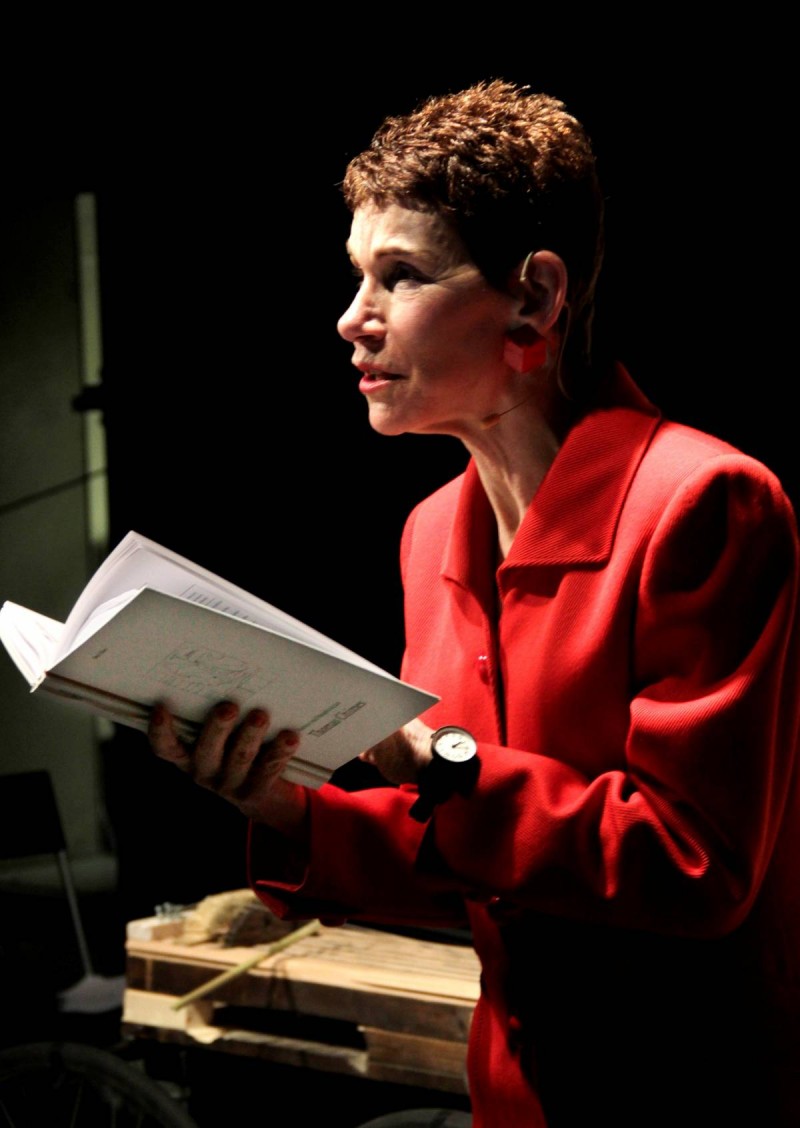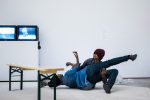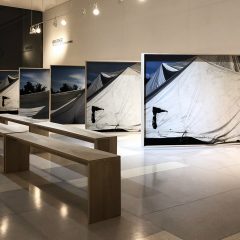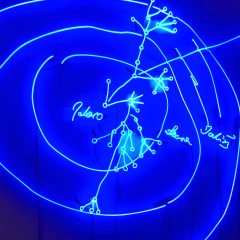
Image removed
Thomas Hirschhorn, Concept Car, at Art Fair ARCO in Madrid
I overcame my art fair fatigue and visited Madrid’s Art Fair ARCO for the first time last weekend, lured in part by the exhibitions in Madrid’s great museums. How could I resist seeing the Picasso exhibition with the Spanish light in my eyes at the Reina Sofia, home of Picasso’s antiwar masterpiece Guernica? Nor did I want to pass up Velasquez at the Prado or the two part Modigliani show at the Thyssen-Bornemisz Museum and the Caixa Foundation. I was not disappointed.
ARCO is a kinder, gentler art fair. It is located a short ride away from Madrid’s fine museums all huddled within easy walking distance from each other. Museum going is an integral part of the ARCO experience. The fair is quintessentially Spanish…warm… inviting… minus the usual U.S. art world celebrities… packed with European and South American collectors of a less frenetic sort. The aisles are wonderfully wide. The spaces are spacious, and the atmosphere is relaxed.
At ARCO, there is nowhere near the kind of broad-based international artist representation that the Basels and Frieze Art Fairs offer. Nor do the ever-expanding number of off-site venues Miami Basel has spawned breed here. One is also unlikely to find the blue chip classics that line the walls in Basel or the star-studded gallery shows that London hosts during its Art Fair, Frieze. The overwhelming number of galleries at ARCO are Spanish and Latin American with a few from each of the other European countries as well. The rest of the world is markedly underrepresented.
Berlin gallerist Ulrich Gebauer has shown at ARCO for 13 years. An ARCO enthusiast, Gebauer explains that ARCO grew out of post Franco Spain’s deep desire to re-enter the democratic European Community. ARCO is a source of national pride. The media floods news of ARCO goings on. Every year the number of international collectors grows, but so too does the number of young and middle class Spanish collectors. In fact there were some grumblings at the Fair from long time attendees that ARCO had grown too big.
Carlier Gebauer’s booth offered a sampling of the fine artists the gallery represents. Two large, beautiful light paintings with faint glows by Chinese artist Kailiang Yang were scooped up shortly after the doors were unlocked for VIP collectors at 9:30 Wednesday morning. By late afternoon, Gebauer had already assembled an impressive waiting list for works by Yang who lives in Hamburg.
Image removed
Thomas Hirschhorn, Concept Car detail
The crowd-stopper piece at ARCO was Swiss artist Thomas Hirschhorn’s Concept Car at Arndt and Partners of Berlin, which was snapped up by an important Brazilian Foundation. Watching passengers store their belongings in an overhead compartment of an airplane, Hirschhorn began thinking about one’s belongings and how important personal belongings are to their owners. Eventually he began building this car chock full inside and out with Hirschhorn belongings, arranged in a colorful abstract painting of things. The Hirschhorn belongings range from his well worn personal books to strings of key chains seemingly acquired for the project, but none-the-less his belongings.
Image removed
Thomas Hirschhorn, Concept Car detail
Red dots proliferated quickly at Espacio Minimo, a reasonably priced gallery offering fresh, young work. Classical blue chip Spanish gallerist Elvira Gonzales and her two daughters presented a stunning booth featuring classic work by Jesus-Rafael Soto, Waltercio Caldas, Gego and others. The unexpected run-away hit at Gonzales’ booth were torn paper works by Elena Del Rivero. The beautiful, large white works stitched with black threads, sometimes with a dangling sewing needle and sometimes stitched with sequins. Gonzales quickly sold the one Del Rivero displayed in her booth and then ransacked the back room and gallery for the remaining five other examples from this body of work by Del Rivero, all of which sold. Gonzales promised to send latecomers images of new works as soon as Del Rivero makes more. Elena del Rivero, a 52-year-old artist who has worked for years with a focused and committed vision may be on the cusp of well-deserved greater recognition.
Gonzales also had a beautiful show at her gallery based on the circle that included Gego and Watercio Caldes, Adolfo Schlosser, Olafur Eliasson, Gunter Haese, along with a Damien Hirst dot painting and two beautiful small Robert Mangold drawings. A separate wall in the Gonzales gallery showed a wall of Del Rivero paintings, reflecting an ambitious project in which Del Rivero kept a diary of her personal artistic journey traveling to see Rembrandts around the world.
Red haired art grande dame Juana De Aizpuru’s striking booth included a one in three Joseph Kosuth sculpture consisting of a photograph of the shovel, the shovel and a definition of shovel in Spanish. She also had a large Georg Herold caviar painting which one collector described as the find of the Fair.
Ms. Aizpuru hosted a packed opening and dinner in her gallery on Friday evening for Polish artist Miroslaw Balka. The exhibition in a darkened room was dominated by a large jail-like structure with a constantly flashing, very bright naked light bulb hanging from the ceiling of the structure. The pain of this universal torture/interrogation chamber was palpable, evoking not only the pain of bright lights, but also unbearable noise and sleeplessness. I thought of the Nazi torture chambers in Eastern Europe, but it could just as easily have brought to mind Abu Ghraib or any of the other horrors of torture throughout history. Balka described his work as like a Haiku poem. He draws a few lines and the observer fills in the spaces. Aizpuru artist Joseph Kosuth starred the next evening with the opening of an exhibition of his writings on the façade of LaCasa Encendida in a work titled “At Last I Thought I Understood”, followed by a dinner in his honor.
Image removed
Glenda Leon, Caja de Musica, vinyl records, wood, 7 x 10 x 7 cm., One Night Gallery, La Habana, 2006, Figge von Rosen Galerie, Cologne, 2006, one of the pieces seen at ARCO
Cuban Artist Carlos Garaicoa hosted a show of Cuban artists in a small gallery space he keeps below his Madrid apartment. Included were three pieces by Glenda Leon having to do with music—silent music. There was a record box and a record picture. The largest piece was a phonograph with a record on it, but the phonograph does not play, and hairs from the artist’s head are embedded in the record. At this exhibition, prominent Washington D.C. collectors Aaron and Barbara Levine bought their eighth Carlos Garaicoa piece, a beautiful two part photograph. Both photographs are of the same site in Cuba. The buildings in the first photograph were destroyed by the time of the second photograph, but the memory of the buildings’ presence is outlined in red and green thread in the second photograph [editor’s note: This sounds like a piece that was in Garaicoa’s ICA exhibit].
Image removed
Juan Pérez Agirregoikoa, image taken at Exposición colectiva. Bienal de Lyon, Lyon, 2007, image courtesy Carreras Mugica Gallery
The interesting find of the Fair for Kramlich Collection Curator Christopher Eamon was a group of Boris Mikhailov photographs from the 1960s. Eamon was also taken by the works of Basque artists Juan Pérez Agirregoikoa who is living in Paris, Xabier Salaberria, and Asier Mendizabal, all of whom are represented by Carreras Mugica Gallery.
Image removed
Xabier Salaberria, prints say, in reverse, It is not a garden table.
Thumbs up for ARCO. The Fair was short on frantic buying and long on new young artists to explore, great fish and congeniality, and Madrid’s museums were at their best.
–Art fair veteran Mari Shaw collects contemporary art. Here’s an interview of her on artblog.









